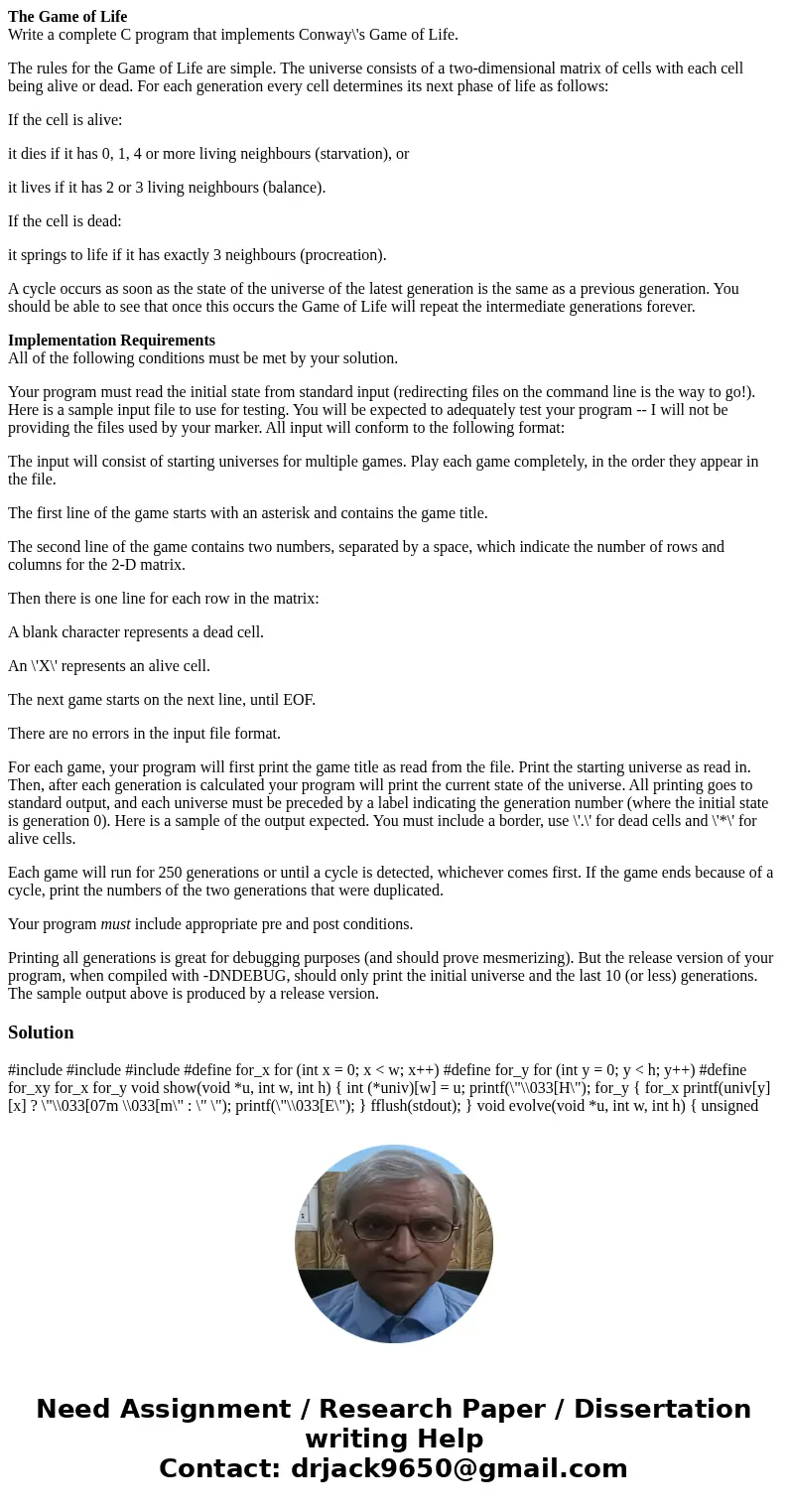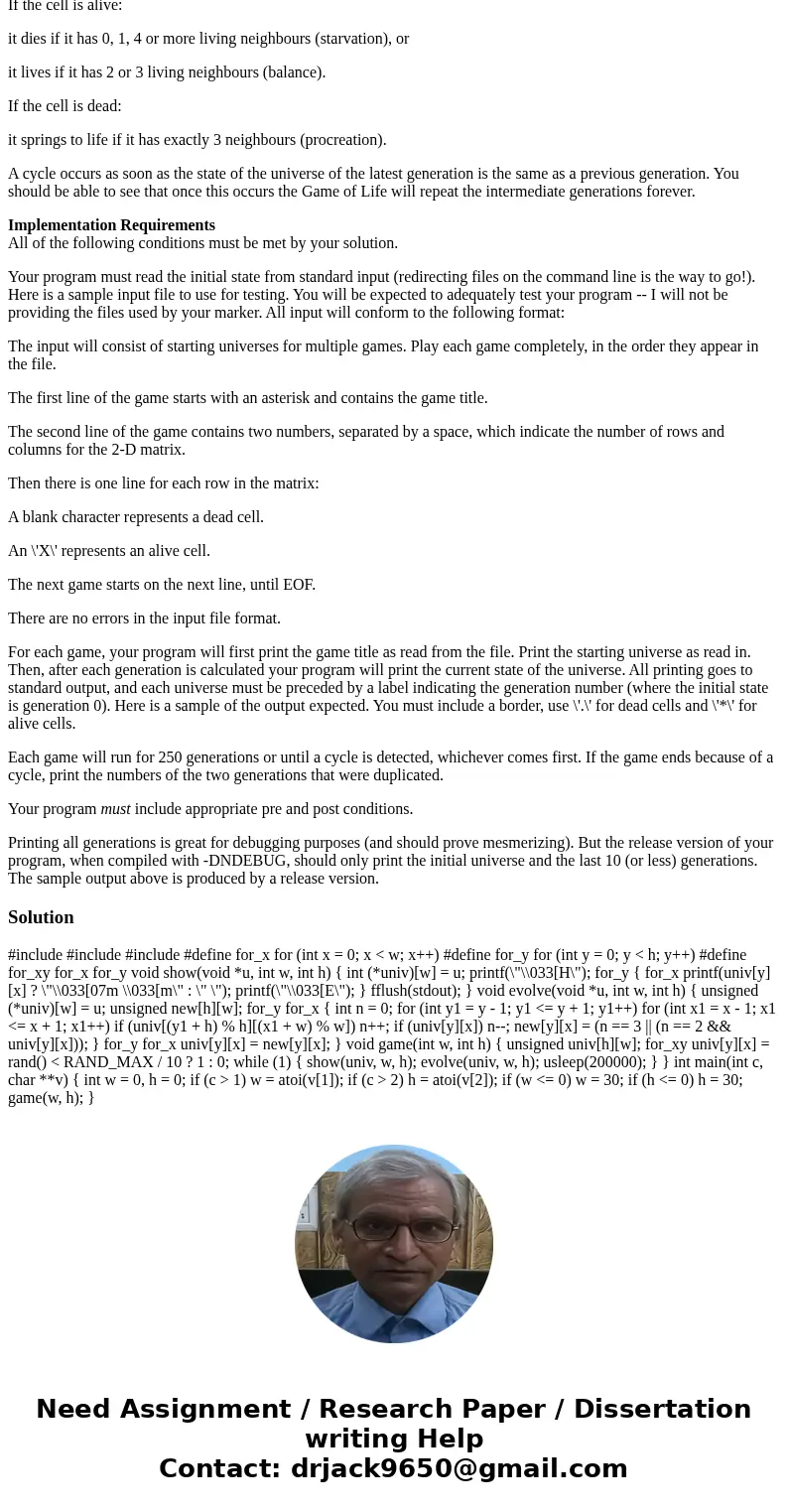The Game of Life Write a complete C program that implements
The Game of Life
Write a complete C program that implements Conway\'s Game of Life.
The rules for the Game of Life are simple. The universe consists of a two-dimensional matrix of cells with each cell being alive or dead. For each generation every cell determines its next phase of life as follows:
If the cell is alive:
it dies if it has 0, 1, 4 or more living neighbours (starvation), or
it lives if it has 2 or 3 living neighbours (balance).
If the cell is dead:
it springs to life if it has exactly 3 neighbours (procreation).
A cycle occurs as soon as the state of the universe of the latest generation is the same as a previous generation. You should be able to see that once this occurs the Game of Life will repeat the intermediate generations forever.
Implementation Requirements
All of the following conditions must be met by your solution.
Your program must read the initial state from standard input (redirecting files on the command line is the way to go!). Here is a sample input file to use for testing. You will be expected to adequately test your program -- I will not be providing the files used by your marker. All input will conform to the following format:
The input will consist of starting universes for multiple games. Play each game completely, in the order they appear in the file.
The first line of the game starts with an asterisk and contains the game title.
The second line of the game contains two numbers, separated by a space, which indicate the number of rows and columns for the 2-D matrix.
Then there is one line for each row in the matrix:
A blank character represents a dead cell.
An \'X\' represents an alive cell.
The next game starts on the next line, until EOF.
There are no errors in the input file format.
For each game, your program will first print the game title as read from the file. Print the starting universe as read in. Then, after each generation is calculated your program will print the current state of the universe. All printing goes to standard output, and each universe must be preceded by a label indicating the generation number (where the initial state is generation 0). Here is a sample of the output expected. You must include a border, use \'.\' for dead cells and \'*\' for alive cells.
Each game will run for 250 generations or until a cycle is detected, whichever comes first. If the game ends because of a cycle, print the numbers of the two generations that were duplicated.
Your program must include appropriate pre and post conditions.
Printing all generations is great for debugging purposes (and should prove mesmerizing). But the release version of your program, when compiled with -DNDEBUG, should only print the initial universe and the last 10 (or less) generations. The sample output above is produced by a release version.
Solution
#include

 Homework Sourse
Homework Sourse